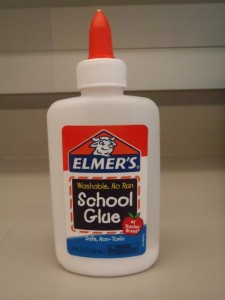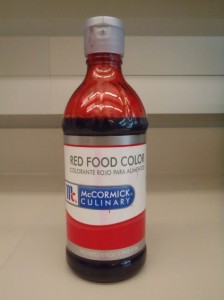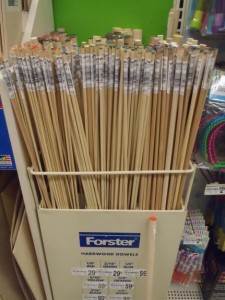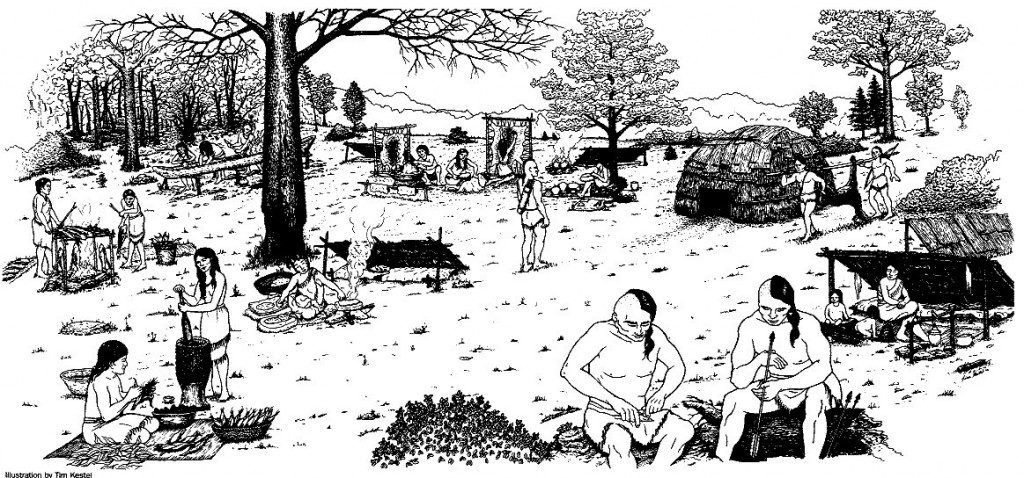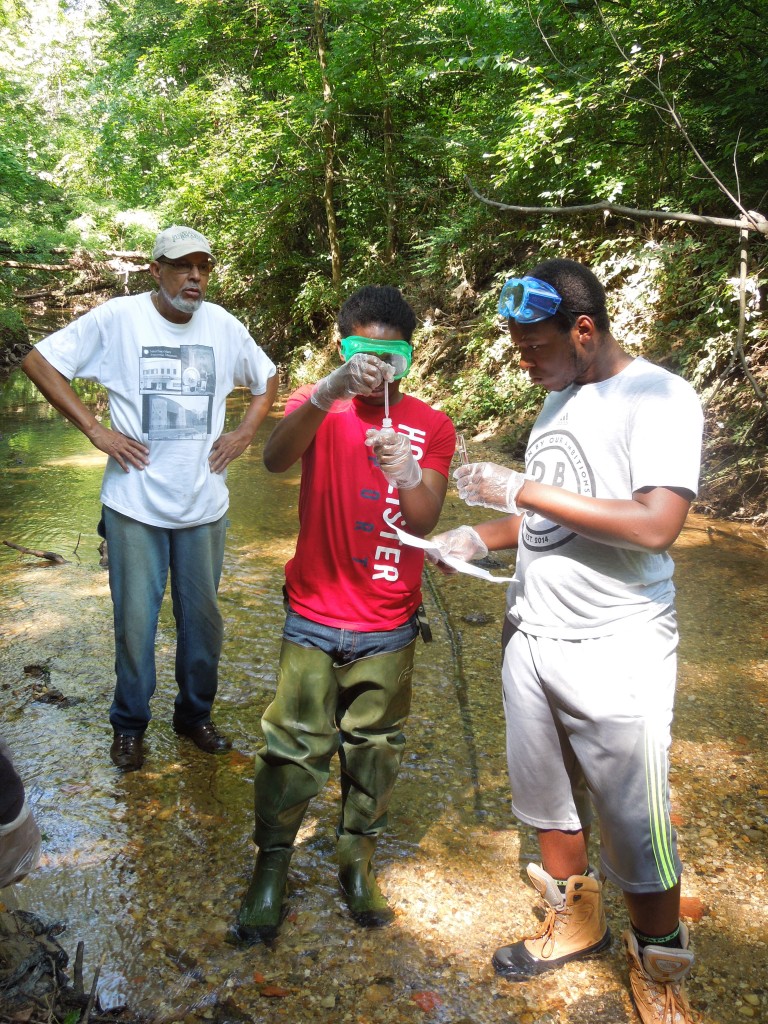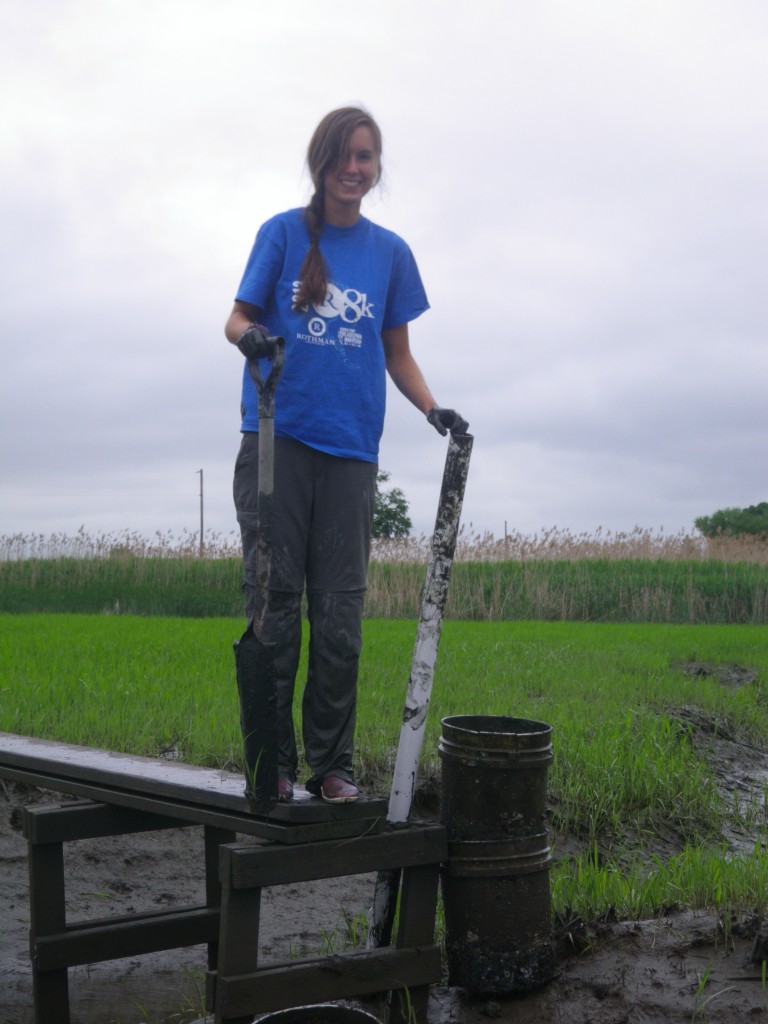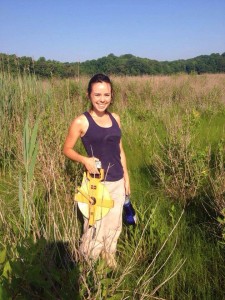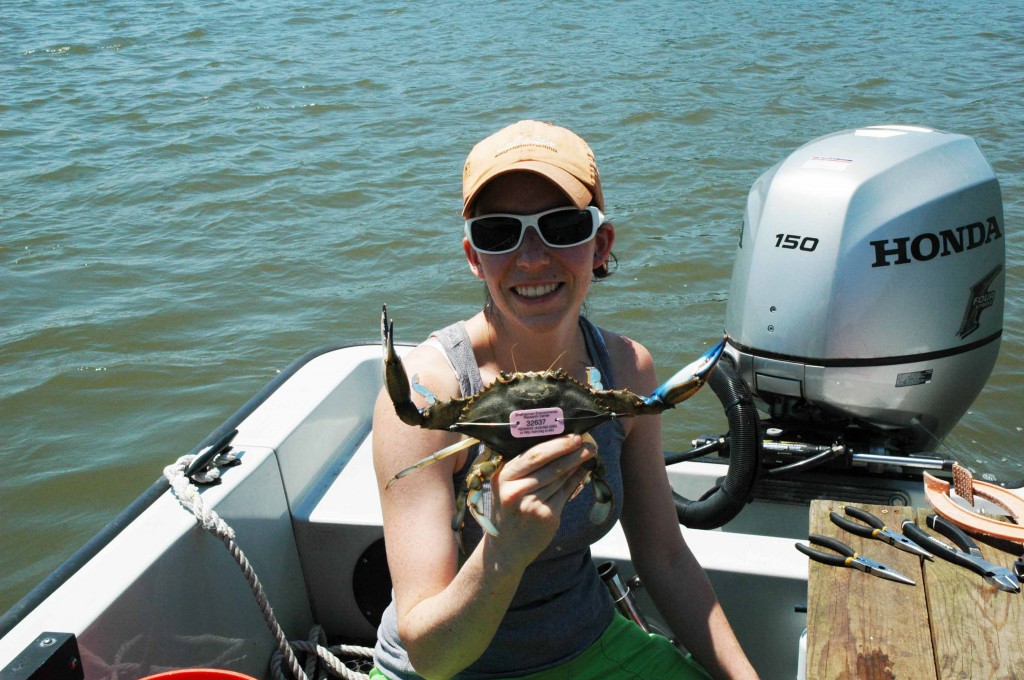By Sarah Hansen

An upland forest plot at SERC. Lauren Emsweller, David Gorchov, and Julia Mudd (left to right) search for five invasive plant species.
Invasive plants are rampant throughout the United States. Some have been here for tens or even hundreds of years, while others are relative newcomers. They compete with native plants for resources, and more often than not they win the fight.
David Gorchov, visiting scientist from Miami University of Ohio, is leading a project to map five invasive plant species in upland forests at the Smithsonian Environmental Research Center (SERC). In particular, he’s interested in how gaps in the forest canopy, usually created by a tree falling, affect the abundance of these invasives. One of his graduate students, Lauren Emsweller, is here working on the project for her master’s thesis. Julia Mudd, a SERC intern from Florida State University, is getting college credit to help them out.
“There are a few studies that have looked at the importance of gaps, but there’s none that have done complete maps like this that I’m aware of,” said Gorchov.
Click to continue »


